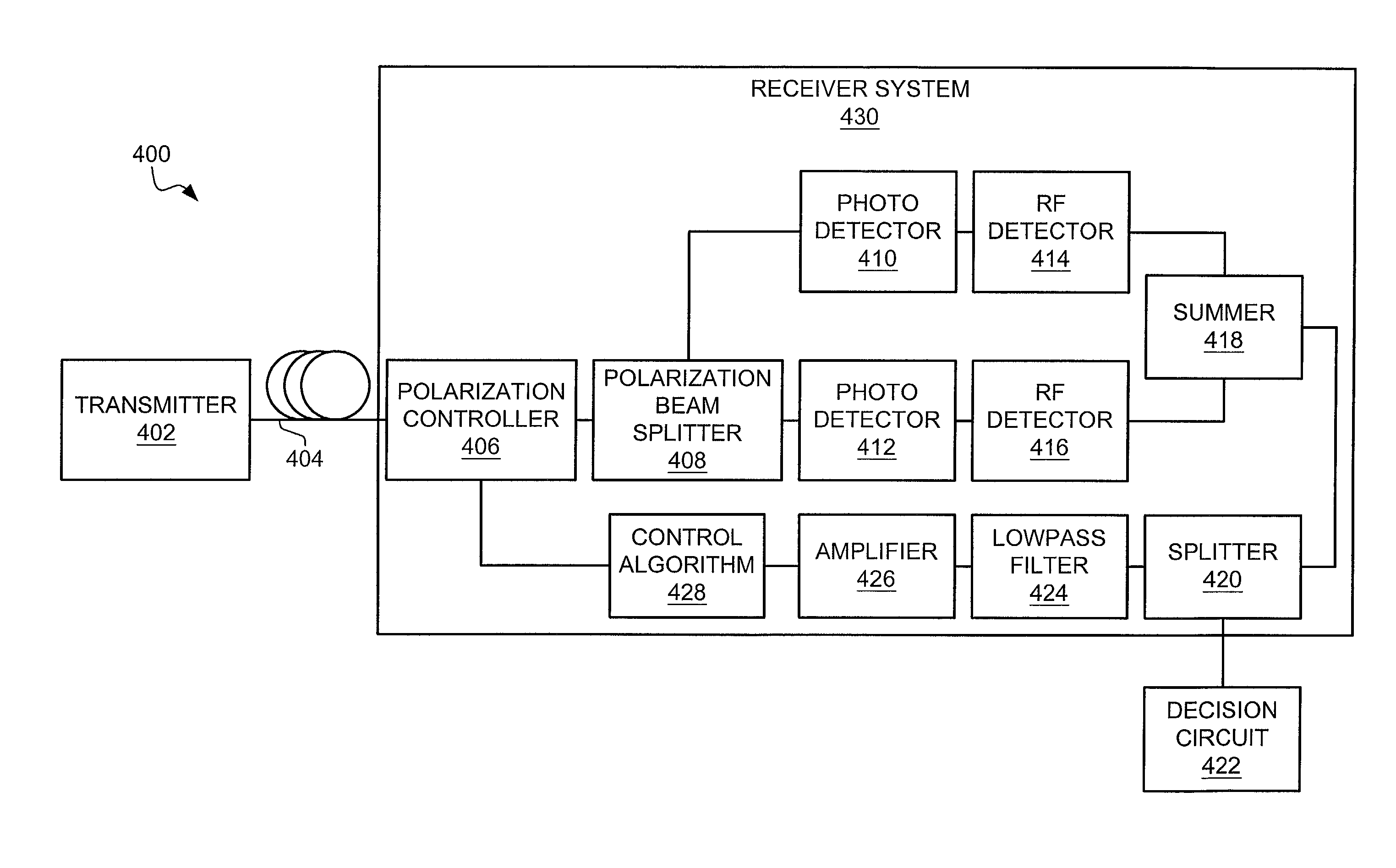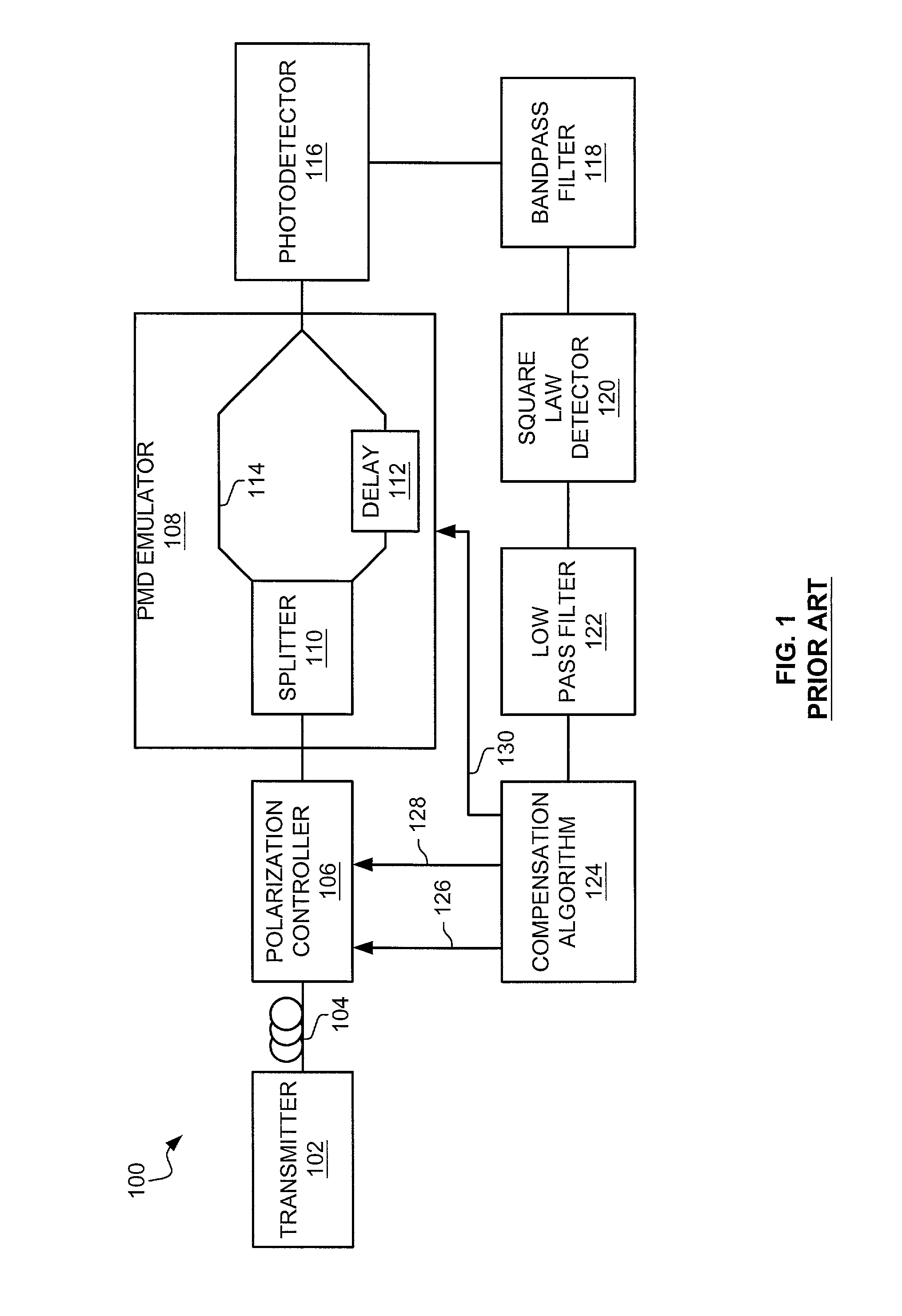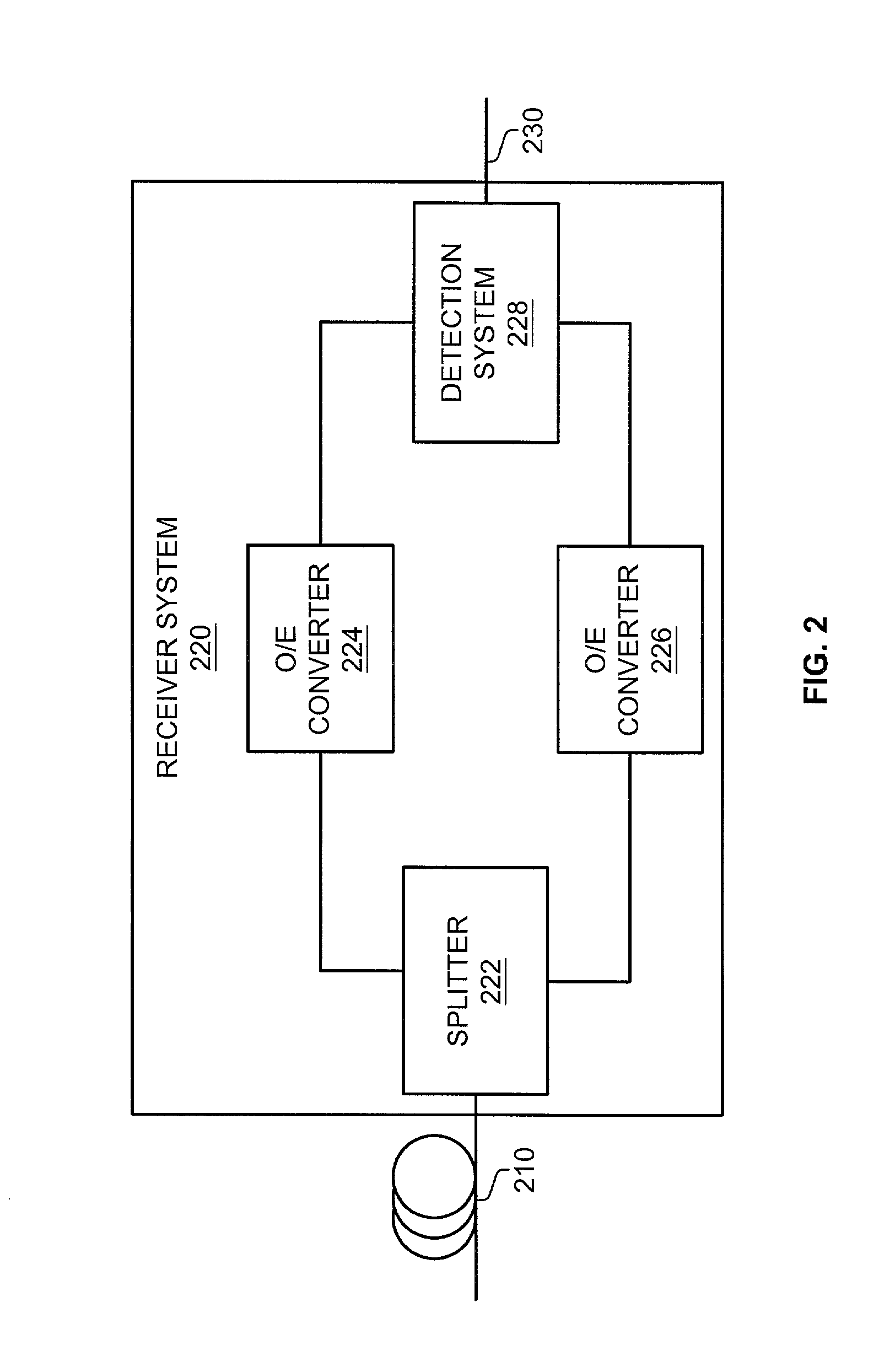Optical systems with diversity detection
a technology of optical systems and diversity, applied in the field of communication, can solve the problems of reducing the dispersion effect of optical systems that utilize these transmission technologies, affecting the reliability of optical systems, so as to achieve greater reliability and reduce the dispersion
- Summary
- Abstract
- Description
- Claims
- Application Information
AI Technical Summary
Benefits of technology
Problems solved by technology
Method used
Image
Examples
Embodiment Construction
[0026]FIG. 2 depicts a block diagram of a receiver system 220 in an example of the invention. The receiver system 220 comprises a splitter 222, an optical to electrical (O / E) converter 224, an O / E converter 226, and a detection system 228. An optic fiber link 210 is connected to the splitter 222. The splitter 222 is connected to the O / E converter 224 and the O / E converter 226. The detection system 228 is connected to the O / E converter 224, the O / E converter 226, and an output link 230.
[0027]The splitter 222 is any system or device configured to split a received optical signal based on polarization into a first optical signal and a second optical signal. One example of the splitter 222 is a polarization beam splitter. The O / E converter 224 and the O / E converter 226 are any system or device configured to convert an optical signal into an electrical signal. Some examples of the O / E converter 224 and the O / E converter 226 are photodiodes. The detection system 22...
PUM
 Login to View More
Login to View More Abstract
Description
Claims
Application Information
 Login to View More
Login to View More - R&D
- Intellectual Property
- Life Sciences
- Materials
- Tech Scout
- Unparalleled Data Quality
- Higher Quality Content
- 60% Fewer Hallucinations
Browse by: Latest US Patents, China's latest patents, Technical Efficacy Thesaurus, Application Domain, Technology Topic, Popular Technical Reports.
© 2025 PatSnap. All rights reserved.Legal|Privacy policy|Modern Slavery Act Transparency Statement|Sitemap|About US| Contact US: help@patsnap.com



